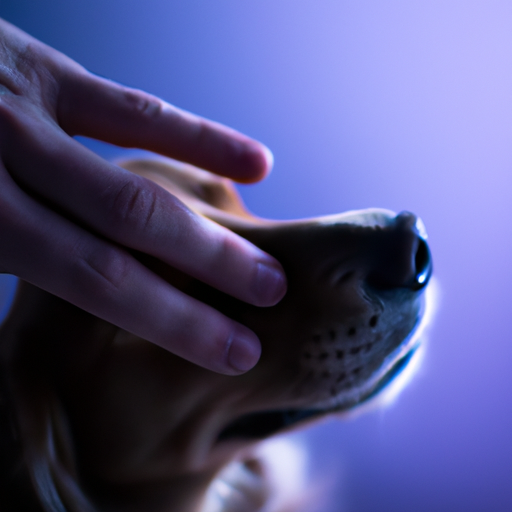Understanding Your Dog’s Anxiety
You’ve probably noticed that your dog gets anxious from time to time. Just like humans, dogs can experience anxiety, which can be triggered by various factors. These can range from separation from their caregiver, fear of certain objects or situations, or even aging. Understanding your dog’s anxiety is the first step towards helping them.
- Separation Anxiety: This is common in dogs who are left alone for long periods.
- Fear-Related Anxiety: This can be triggered by loud noises, visual stimuli like hats or umbrellas, new or strange environments, or specific situations like the vet’s office.
- Age-Related Anxiety: This affects older dogs and can be associated with cognitive dysfunction syndrome (CDS).
Knowing your dog’s triggers can help you anticipate their anxiety and take steps to alleviate it.
Creating a Safe Environment
A safe, comfortable environment can work wonders in reducing your dog’s anxiety. Here’s how you can create one:
- Designate a Safe Space: If your dog tends to hide under the bed or in a closet when they’re scared, try making that space more comfortable for them.
- Reduce Exposure to Triggers: If possible, try to eliminate or minimize the dog’s exposure to the anxiety triggers. For instance, if your dog fears loud noises, try to keep them in a quiet space, especially during thunderstorms or fireworks.
- Maintain a Routine: Dogs thrive on routine. Try to keep a consistent schedule for feeding, walks, playtime, and bedtime.
Training and Socialization
Training and socialization are key to reducing your dog’s anxiety.
- Training: Training provides mental stimulation which can help reduce anxiety. Always use positive reinforcement and avoid punishment as it can increase anxiety.
- Socialization: This helps your dog get used to different environments, people, and other animals.
Remember to always keep the training and socialization sessions positive and low-stress.
Using Calming Aids
Calming aids can also be beneficial in reducing your dog’s anxiety. Here are some options:
| Calming Aid | Description |
|---|---|
| Thundershirt: | This is a vest that applies gentle, constant pressure, similar to swaddling a baby. |
| Calming Music: | Certain types of music, particularly classical, can have a calming effect on dogs. |
| Pheromone Diffusers: | These mimic the pheromones that mother dogs produce to calm their puppies. |
Remember, what works for one dog might not work for another. It’s all about finding what works best for your pet.
Seeking Professional Help
Sometimes, despite your best efforts, your dog’s anxiety may persist. In these cases, seeking the help of a professional, such as a veterinarian or a certified animal behaviorist, might be necessary.
Frequently Asked Questions
Q: Can I use human anxiety medication on my dog?
A: No, never use human medication on your dog without consulting a vet.
Q: How can I tell if my dog is anxious?
A: Look for signs like excessive barking, pacing, shaking, or destructive behavior.
Q: Can puppies have anxiety?
A: Yes, puppies can experience anxiety. Early socialization can help prevent anxiety in later life.
Q: Can anxiety shorten my dog’s life?
A: Chronic stress and anxiety can potentially have a negative impact on your dog’s health and lifespan. It’s important to address anxiety issues promptly.



